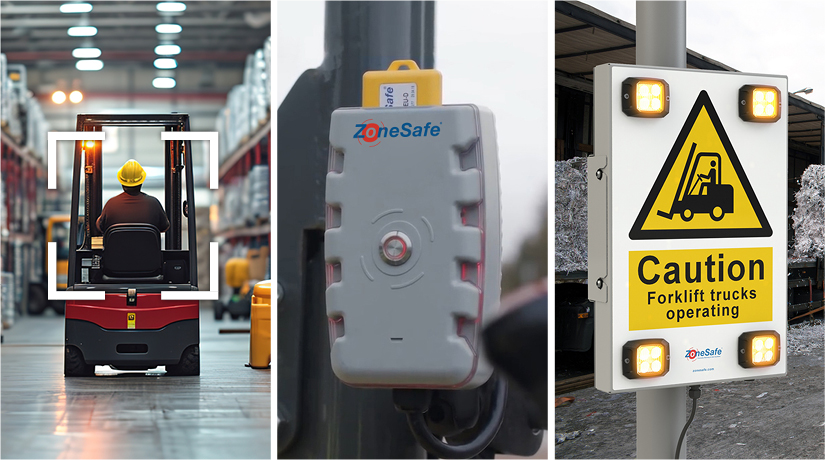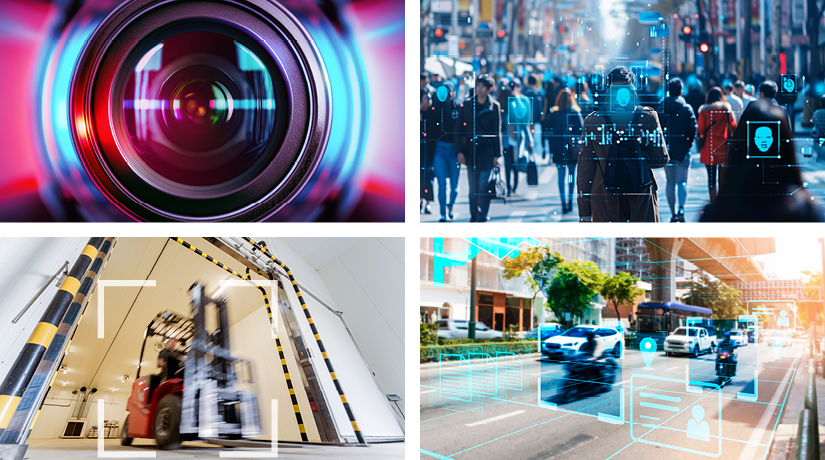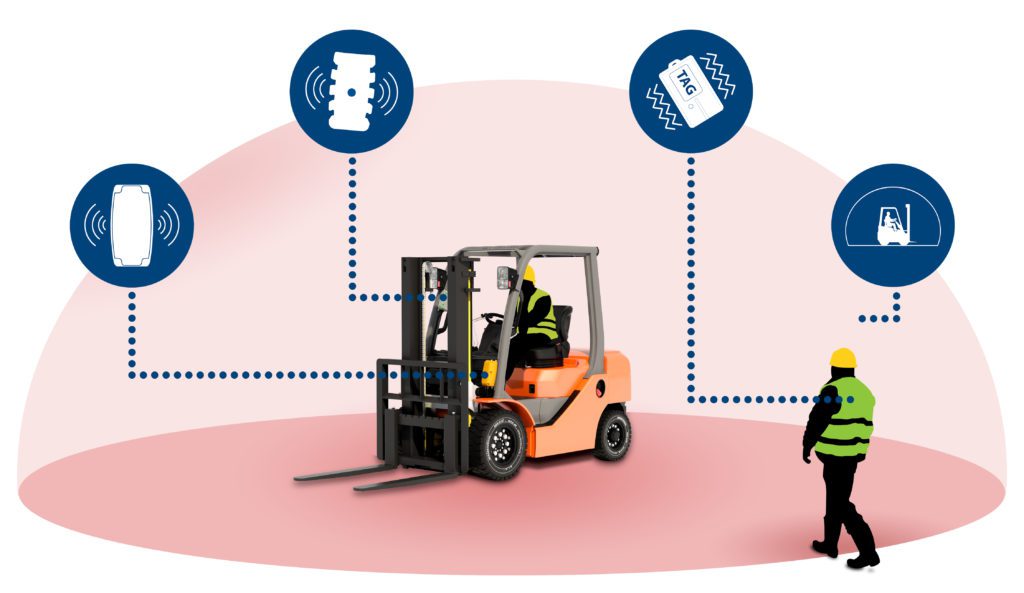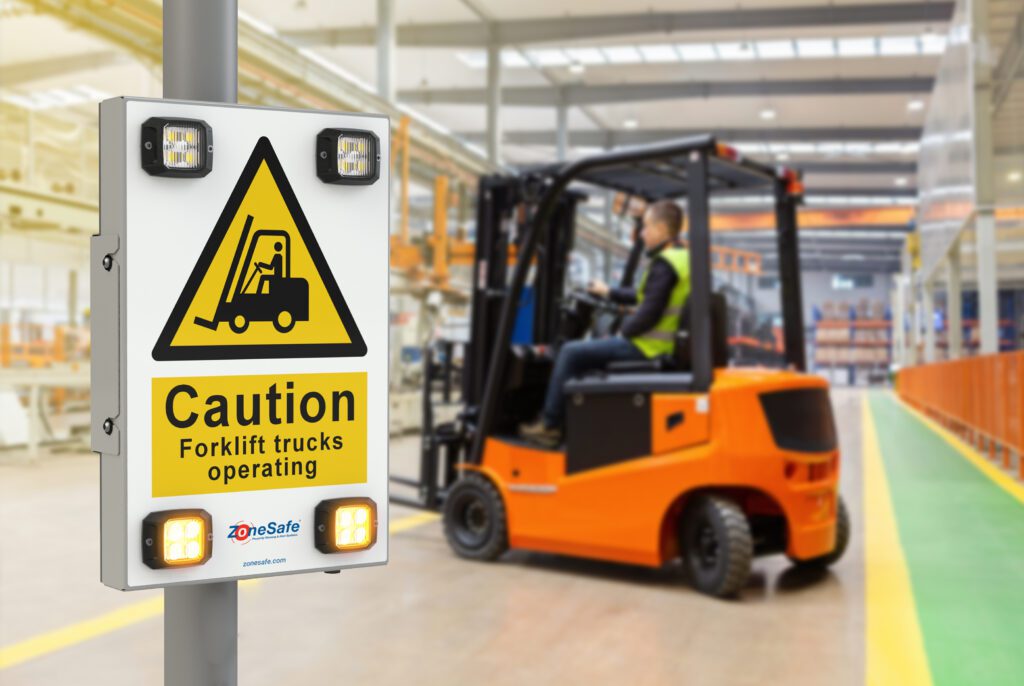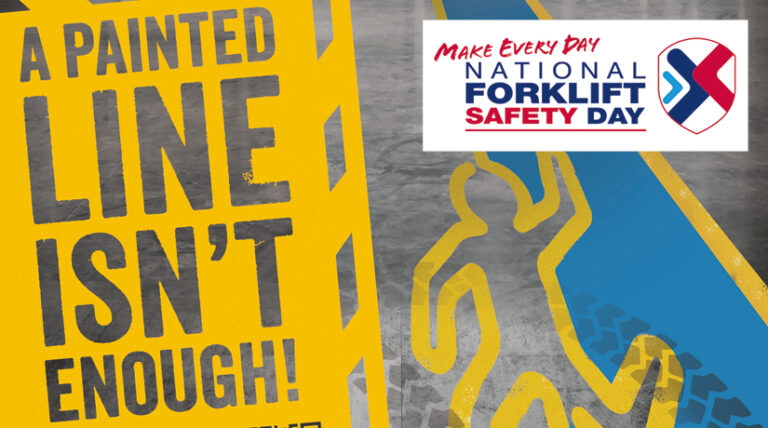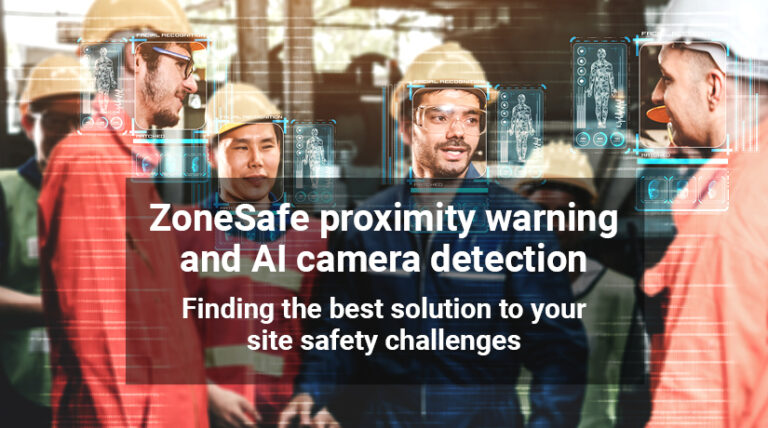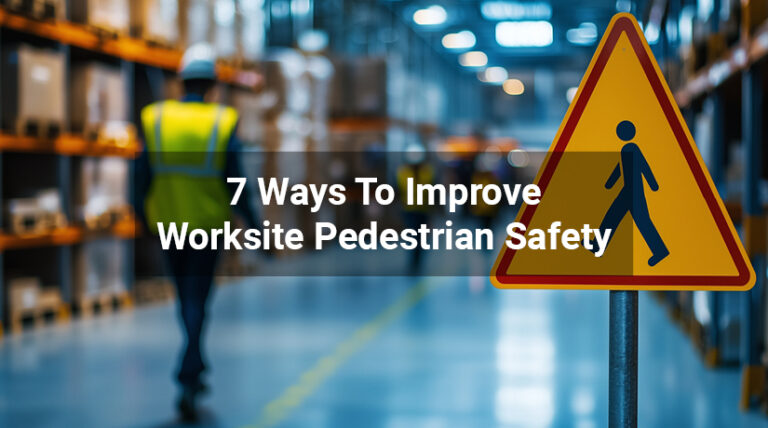Pedestrian safety is vital when working with workplace transport and heavy machinery. Every year, serious and fatal accidents occur due to collisions between vehicles and pedestrians. Taking appropriate measures to address this risk is crucial for accident mitigation. When considering proximity warning solutions, it’s important to understand the difference between tag based and non tag based proximity warning systems. However, with numerous solutions available, it can be challenging to determine the best action and which products to invest in. It’s essential to select the right proximity warning solution that meets your workplace’s specific challenges.
AI Detection Cameras
AI detection cameras are becoming popular and offer a good solution in certain circumstances. They are particularly effective in locations where the workforce can’t be “tagged” or where public access is uncontrolled. These cameras utilise advanced technology to monitor and identify potential hazards.
How Do AI Detection Cameras Work?
The cameras use video content analysis (VCA) to analyse live video footage. The system compares this content to its database of predefined images and raises an alarm when it recognises a pedestrian. For effective functioning, images must be preloaded into the database and include various scenarios—such as different people, obstacles, vehicles, and various environmental conditions. This ensures that the system can accurately identify and respond to potential hazards.
While AI detection cameras can be highly effective, they have certain limitations:
Lighting Conditions: AI cameras work well in controlled environments, such as factories with consistent lighting. However, in outdoor settings, cameras can be restricted by bright or low light conditions and weather elements that can obstruct camera visibility.
Line of Sight: AI detection cameras operate within their direct line of sight and cannot detect objects or people around corners, blind bends, behind walls or racking. This limitation can create potential safety risks in environments with complex layouts.
Database Dependency: The effectiveness of AI detection cameras relies heavily on the comprehensiveness of their image database. If the database lacks sufficient detail, there is a risk of false positives or negatives. For example, the camera might fail to recognise a person or mistakenly identify an object as a pedestrian. Additionally, AI cameras may struggle in more complex environments requiring highly detailed and varied images.
Despite these limitations, AI cameras significantly raise driver awareness, enabling them to stop activity and prevent accidents.
Tag Based Proximity Warning Systems
Tag based proximity warning systems offer a different approach by simultaneously alerting both drivers and pedestrians when they are in close proximity. This dual system has been proven to reduce collisions between people and vehicles in the workplace. This trusted technology has significantly improved site safety for many high-profile clients over the years and continues to do so.
How Does ZoneSafe Tag Based Systems Work?
The ZoneSafe tag-based system consists of an in-cab control unit and an antenna fitted to any industrial vehicle, such as a forklift. Small tags are assigned to pedestrians working in or visiting the area. ZoneSafe uses RFID technology to create a configurable 360-degree detection zone around vehicles and heavy machinery. When a tagged pedestrian enters this zone, the system triggers an alarm within the vehicle cab and vibration from the pedestrian’s tag, alerting both parties to the potential danger.
The Benefits of Using Tag Based Systems – Making the Unseen, Seen!
In busy environments such as warehouses, recycling centres, and factories, accidents often occur in hotspots like blind spots, corners, and crossings. Drivers can’t always see what lies ahead, and pedestrians may inadvertently walk into a vehicle’s path. Tag based systems such as ZoneSafe provide a reliable line of defence by alerting both the driver and pedestrian to the presence of a risk, even when visibility is compromised. RFID technology enables ZoneSafe to “see” around corners and through obstructions. Once the detection zone is breached, audible, visual and vibration alarms alert workers, allowing them to stop and avoid collisions. This tag-based solution is often combined with vehicle detection, ensuring another layer of safety to the worksite.
Withstanding Harsh Environments
Adverse weather conditions and poor visibility can exacerbate risks in the workplace. Dust, smoke, low lighting, heavy rain, fog, or other environmental factors can all contribute to serious accidents. ZoneSafe is designed for high-traffic, high-risk environments and is built to withstand even the harshest conditions. The system functions effectively in all weather conditions and is unaffected by dust, smoke, or poor visibility. Its robust casing can withstand a fall from height or even being driven over by a vehicle, ensuring reliable performance.
Access Control
In addition to accident avoidance, ZoneSafe technology can control access to high-risk or restricted areas. The tags can be programmed to communicate with access control barriers, traffic lights, or other systems to regulate entry into dangerous zones. This feature enhances safety at accident-prone locations by controlling when vehicles and personnel can enter.
Data Insights
While in use, ZoneSafe collects data stored in the cloud and is easily downloadable for analysis. This data provides insights into worker behaviour, vehicle activity, and areas of safety concern. This information is often used to create targeted training programs and support a positive safety culture in the workplace.
In addition to the tag based proximity warning systems, ZoneSafe offers non tag based proximity warning systems that enhance workplace safety. These systems use other types of sensors and technologies to monitor the environment and trigger necessary safety actions.
Non Tag Based Proximity Warning Systems: Activated Signage and Sensor-Based Alerts
One of our non tag based proximity warning systems is the activated signage system, which utilises wall-mounted sensors to monitor specific zones or activities. These sensors can detect movement or the presence of vehicles in high-risk areas and automatically trigger flashing warning signs or safety mechanisms, such as:
Automatic Barriers: The sensor can detect an approaching vehicle or pedestrian and trigger barriers’ automatic closing or opening. This ensures that only authorised personnel or vehicles enter restricted areas, preventing unauthorised access and reducing the risk of accidents.
Visual and Audible Alarms: When a sensor detects a potential hazard, it can trigger visual and audible alarms to alert workers of impending danger. This is particularly useful in areas with heavy machinery or limited visibility. The alarms provide additional protection by making workers aware of risks even if they are unaware of an approaching vehicle.
Controlled Access Points: Sensors can be integrated with access control systems like traffic lights or gates to manage traffic flow in busy areas. For instance, at a warehouse crossing or a busy intersection within a facility, the system can control the timing of vehicle and pedestrian movements to minimise the risk of collisions.
The Benefits of Non Tag Based Proximity Warning Systems
These non tag based proximity warning systems are highly versatile and often used in various settings where a tag based system might not be ideal or as an extra layer of safety. Some benefits include:
Flexibility: The activated signage system can be customised to suit specific locations and safety requirements. For example, in areas where tagging every individual is impractical, the sensor-based system can still provide an effective safety solution.
Enhanced Safety: By automating responses to detected hazards, these systems help prevent accidents proactively without relying on human intervention. This reduces the chance of human error and ensures consistent safety practices.
Seamless Integration: Non tag based proximity warning systems can be integrated with existing safety protocols and systems. For instance, they can work alongside other ZoneSafe products, such as tag based systems, to create a comprehensive safety network within a facility.
Cost-Effective: In scenarios where only a few high-risk areas need monitoring, activated signage can provide a cost-effective alternative to more complex solutions, offering targeted protection where it’s most needed.
Applications
The non tag based proximity warning systems are beneficial in:
Public Areas: Where tagging every pedestrian isn’t feasible, such as visitor entrances or shared spaces within a facility.
Fixed Safety Zones: Areas that consistently present hazards, like automated gates or dangerous machinery zones.
Temporary Worksites: Where safety needs to be changed regularly, and a flexible system is required.
By offering both tag based and non tag based proximity warning systems, ZoneSafe ensures that you have the right tools to address the specific safety challenges of your workplace environment.
Quick Installation and Long Life
ZoneSafe is highly adaptable and fitted to any workplace transport and heavy machinery. Installation takes as little as two hours and has minimal disruption to operations. Once installed, the tags become part of everyday personal protective equipment (PPE), and in-cab units easily integrate into daily vehicle checks and procedures. The tag charging unit fully charges tags within two hours, and the battery life allows up to three months of continuous use. Tags are expected to last many years, helping with low through-life costs.
Not all safety systems are created equal, and choosing the right solution depends on the unique challenges of your workplace environment. Whether you opt for tag based proximity warning systems that provide personal alerts or non tag based proximity warning systems like activated signage, finding the technology that best fits your specific needs is essential. ZoneSafe offers a range of customisable options designed to enhance safety and reduce risks, ensuring that your workplace remains secure for everyone. By carefully selecting the right system, you can create a safer, more efficient environment tailored to your operational demands.
Investment in ZoneSafe is often more affordable than expected, with some options costing as little as two to three thousand pounds. Additionally, ZoneSafe (now in its second generation) has stood the test of time, proving reliable and ensuring long-term value.

